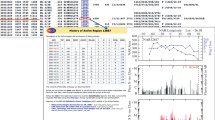Abstract
We present evidence of the occurrence of a white-light flare on 10 September 1886. It represents the third such rare event reported in the history of astronomy. The flare was mentioned by Valderrama (L’Astronomie 5, 388, 1886). In this article we have used the original logbook of the observer, J. Valderrama y Aguilar, an amateur astronomer who lived in Madrid and Santa Cruz de Tenerife at that time.



Similar content being viewed by others
Notes
Translators’ note: sunspot is feminine in Spanish, and Valderrama refers to the sunspot as “her”.
Translators’ note: umbra.
Translators’ note: these structures.
Translators’ note: the sunspot.
Translators’ note: see Figure 1.
References
Baker, D.N., Li, X., Pulkkinen, A., Ngwira, C.M., Mays, M.L., Galvin, A.B., Simunac, K.D.C.: 2013, A major solar eruptive event in July 2012: defining extreme space weather scenarios. Space Weather 11, 585. DOI
Baranyi, T., Győri, L., Ludmány, A.: 2016, On-line tools for solar data compiled at the Debrecen Observatory and their extensions with the Greenwich sunspot data. Solar Phys. DOI
Carrington, R.C.: 1859, Description of a singular appearance seen in the Sun on September 1, 1859. Mon. Not. Roy. Astron. Soc. 20, 13. DOI
Clette, F., Cliver, E.W., Lefèvre, L., Svalgaard, L., Vaquero, J.M., Leibacher, J.W.: 2016, Preface to topical issue: recalibration of the sunspot number. Solar Phys. 291, 2479. DOI
Cliver, E.W., Dietrich, W.F.: 2013, The 1859 space weather event revisited: limits of extreme activity. J. Space Weather Space Clim. 3, A31. DOI
Dobbie, J.C., Moss, W., Thackeray, A.D.: 1938, Two solar eruptions. Mon. Not. Roy. Astron. Soc. 98, 606. DOI
Gosling, J.T.: 1993, The solar flare myth. J. Geophys. Res. 98, 18937. DOI .
Guedes, M.R.G., Pereira, E.S., Cecatto, J.R.: 2015, Wavelet analysis of CME, X-ray flare, and sunspot series. Astron. Astrophys. 804, 28. DOI
Hodgson, R.: 1859, On a curious appearance seen in the Sun. Mon. Not. Roy. Astron. Soc. 20, 15. DOI
Hudson, H.S., Wolfson, C.J., Metcalf, T.R.: 2006, White-light flares: a TRACE/RHESSI overview. Solar Phys. 234, 79. DOI
Jess, D.B., Mathioudakis, M., Crockett, P.J., Keenan, F.P.: 2008, Do all flares have white-light emission? Astrophys. J. Lett. 688, L119. DOI
Jones, H.S.: 1955, Sunspot and Geomagnetic-Storm Data Derived from Greenwich Observations 1874 – 1954, Her Majesty’s Stationery Office, London.
Kuhar, M., Krucker, S., Martínez Oliveros, J.C., Battaglia, M., Kleint, L., Casadei, D., Hudson, H.S.: 2016, Correlation of hard X-ray and white light emission in solar flares. Astrophys. J. 816, 6. DOI
Matthews, S.A., van Driel-Gesztelyi, L., Hudson, H.S., Nitta, N.V.: 2003, A catalogue of white-light flares observed by Yohkoh. Astron. Astrophys. 409, 1107. DOI
Neidig, D.F., Cliver, E.W.: 1983, A catalog of solar white-light flares, including their statistical properties and associated emissions, 1859 – 1982, Air Force Geophysics Laboratory. Technical Report.
Oliver, J.M.: 1997, Historia de la astronomía amateur en España, Equipo Sirius, Madrid.
Rudaux, L.: 1892, La Tache Solaire du 15 Juillet. L’Astronomie 11, 342.
Secchi, A.: 1872, C. R. Acad. Sci. Paris 75, 1581.
Trouvelot, E.L.: 1891, Phenomene Lumineux Extraordinaire Observe sur le Soleil. L’Astronomie 10, 287.
Valderrama, J.: 1886, Ombres observées sur une tache solaire. L’Astronomie 5, 388.
Vaquero, J.M., Vázquez, M.: 2009, The Sun Recorded Through History, Springer, Berlin. DOI
Vázquez, M., Vaquero, J.M., Gallego, M.C.: 2014, Long-term spatial and temporal variations of aurora Borealis events in the period 1700 – 1905. Solar Phys. 289, 1843. DOI
Vázquez, M., Vaquero, J.M., Gallego, M.C., Roca Cortés, T., Pallé, P.L.: 2016, Long-term trends and Gleissberg cycles in aurora Borealis records (1600 – 2015). Solar Phys. 291, 613. DOI
Wang, H.-M.: 2009, Study of white-light flares observed by Hinode. Res. Astron. Astrophys. 9, 127. DOI
Acknowledgements
We thank the IAC librarian, M. Gómez, for putting at our disposal the materials used in this study. They were found by J.A. Bonet, and his participation in the early phases of the project is acknowledged. The support from the Junta de Extremadura (Research Group Grants GR15137) and from the Ministerio de Economía y Competitividad of the Spanish Government (AYA2014-57556-P and AYA2013-47742-C04-02-P) is gratefully acknowledged.
Author information
Authors and Affiliations
Corresponding author
Ethics declarations
Disclosure of Potential Conflicts of Interest
The authors declare that they have no conflicts of interest.
Appendices
Appendix 1: Original Description by Valderrama in Spanish
Día 10 de septiembre
Observación del disco solar: 12 h 25 m á 1h de la tarde
En la región oriental del hemisferio austral se ha formado súbitamente de ayer a hoy una enorme mancha muy bella, está muy alargada por su proximidad al borde… Al observarla con atención he notado sobre ella un fenómeno extraordinario, sobre la penumbra al oeste del núcleo, y casi en contacto con él, se distinguía un objeto muy brillante que producía una sombra perfectamente visible sobre la penumbra de la mancha. Este objeto tenía una forma casi circular, y de su parte oriental partía un largo rayo luminoso que atravesaba la mancha al sur del núcleo, produciendo sombra sobre la penumbra y que iba a perderse sobre la enorme masa de fáculas que rodeaban la extremidad oriental de la mancha. En la extremidad SE de la misma mancha se percibía otra umbra más visible que las precedentes, y que tenía exactamente la misma sombra que la penumbra de la mancha en ese punto. ¿Serían fáculas situadas sobre la penumbra ocultando una parte de la mancha, o bien materias solares flotando sobre la fotosfera, después de haber sido lanzadas por una explosión formidable? Yo creo que el núcleo situado sobre la penumbra de la mancha seguido de un largo rayo luminoso, no es otra cosa, que materias solares flotando encima de la mancha, toda vez que estas se han formado súbitamente en el espacio de unos días. Por el contrario la sombra observada en la extremidad oriental de la mancha, es producida por masas faculares que comienzan a invadirla en ese punto. El dibujo que yo hice (VER DIBUJO), con el más escrupuloso esmero, representa fielmente este fenómeno, uno de los más curiosos que puede ofrecer el astro del día. Al este de la mancha en cuestión se distinguen 4 poros formando un cuadrilátero. Al SO de esta misma mancha se distingue otro grupo formado por 9 poros, otro se distingue al sur sobre un grupo de fáculas y por último otro apenas visible se distingue al SO del anterior. Casi sobre el borde del disco, en la región occidental del hemisferio boreal se columbra aun la gran mancha de los últimos días. Ya no se distingue sino una pequeña parte del núcleo y la mitad de la penumbra.
Appendix 2: English Translation of the Original Description in Spanish
Day 10 September
Observations of the solar disk from 12 h 25 m to 1h in the afternoon.
In the eastern region of the southern hemisphere a huge, beautiful sunspot was formed from yesterday to today, it is elongated due to its proximity to the limb… by looking at it carefully I noticed an extraordinary phenomenon on her,Footnote 1 on the penumbra to the west of the nucleus,Footnote 2 and almost in contact with it, a very bright object was distinguishable, producing a shadow clearly visible on the sunspot penumbra. This object had an almost circular shape, and a light beam came out from its eastern part that crossed the sunspot to the south of the nucleus, producing a shadow on the penumbra that was lost in the large mass of faculae surrounding the eastern extreme of the sunspot. In the SE extreme of the same sunspot, another umbra was perceived even more clearly than the preceding ones, which had exactly the same shadow as the sunspot penumbra at that point. Could they be faculae located on the penumbra hiding a part of the sunspot, or rather solar matter floating over the photosphere, after being ejected by a formidable explosion? I believe that the nucleus located on the sunspot penumbra followed by a long light beam is nothing else but solar matter floating on the sunspot, each time that theseFootnote 3 were formed suddenly in a few days. In contrast, the shadow observed in the eastern extreme of the sunspot is produced by facular matter that starts to invade itFootnote 4 at this point. The drawing I did (see the drawingFootnote 5), with the most scrupulous care, faithfully represents this phenomenon, one of the most curious that the daystar can offer. To the east of the sunspot, four pores forming a quadrilateral can be distinguished. To the SW of the same sunspot, another group formed by nine pores can be distinguished as well, another one is distinguished to the south in a group of faculae, and finally, another one barely visible to the SW of the previous one. Almost at the limb of the disk, in the western region of the northern hemisphere, one can discern the last large sunspot of the last days. One can barely distinguish a small part of the nucleus and half of the penumbra.
Rights and permissions
About this article
Cite this article
Vaquero, J.M., Vázquez, M. & Sánchez Almeida, J. Evidence of a White-Light Flare on 10 September 1886. Sol Phys 292, 33 (2017). https://doi.org/10.1007/s11207-017-1059-6
Received:
Accepted:
Published:
DOI: https://doi.org/10.1007/s11207-017-1059-6




